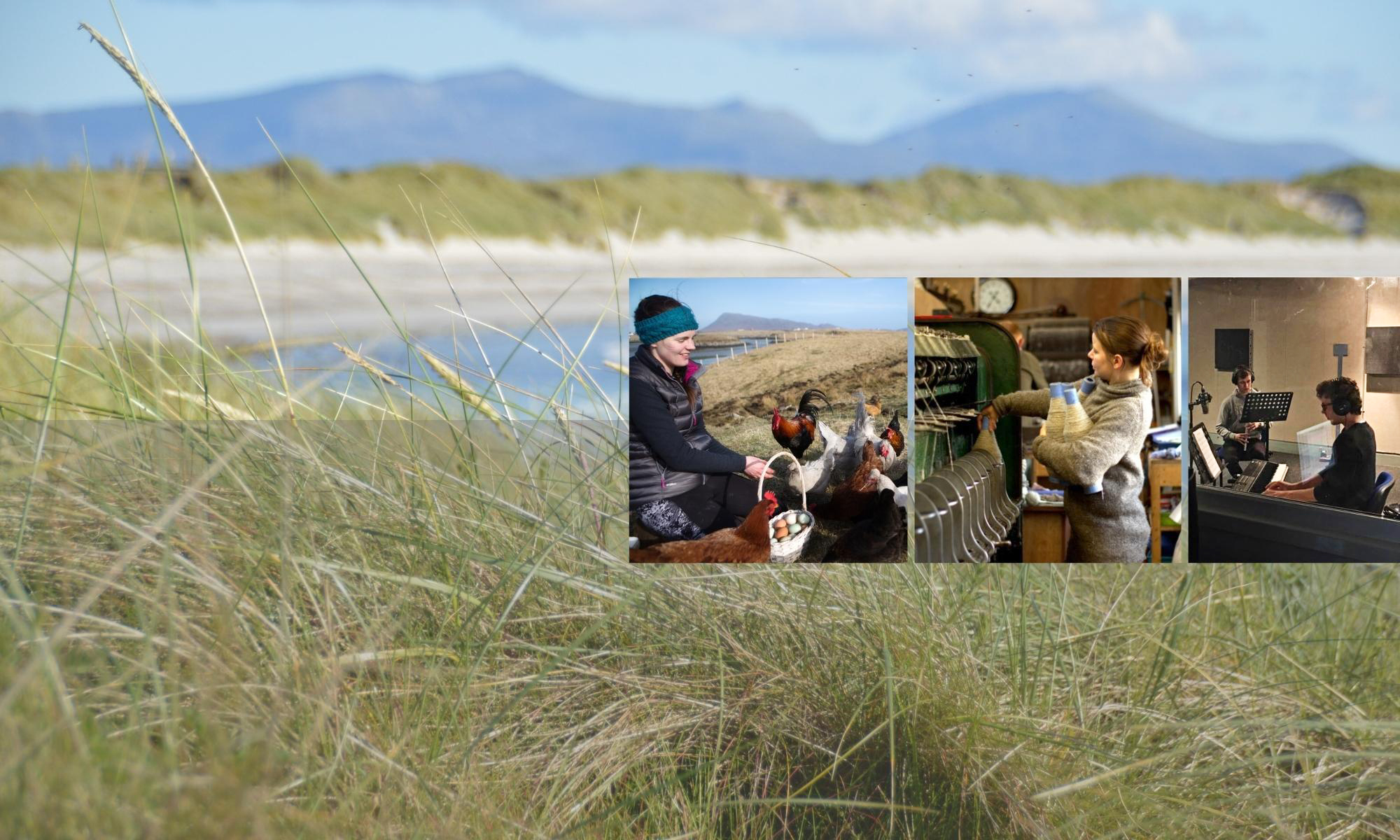The trigger for the launch of CoDeL was a study (published in 2018) of 469 young people on Uist, the seven inhabited islands stretching from Eriskay to Berneray. The study showed a trend with young economically active islanders returning or staying, and young people new to Uist settling on the islands. In fact, of the 469 young people surveyed, most in their 20s and 30s, HALF of them are returners or newcomers. Just as significant, many of these young people have children. Between them the 469 young people have 253 children. Four out of 10 of these children live on Uist because both their parents have chosen to return or settle on Uist. There is plenty of anecdotal evidence that these young people, and these young families, are changing the feel of communities throughout Uist.
- Local people have commented that numbers in Mums and Tots groups have ‘doubled’, while the nurseries that take the youngest children are full.
- The brand new school on North Uist had close to 90 pupils in 2018 rather than the 70 expected when it was being built in 2015-16.
- Particular townships are changing, such as Locheport on North Uist, that has recently experienced a rise from just 2 children to 15 now.
- When the CoDeL survey put out a Facebook message looking for young people between leaving school and turning 40, the survey quickly received 146 responses, which increased the survey sample by 100.
- At least 1 in 10 of the young people in the survey have set up their own businesses: builders and trades; hairdressers and beauticians; landscape gardening and grass cutting; cafe and pub; architects; gift shop; five IT based businesses; dog grooming; craft businesses and knitwear; photography and music; bike hire; childminding; managing crofts; and a planned distillery.
The reasons in all recent surveys for young people and families wanting to stay, return or settle on the islands are the same: because of the environment, safety, peace and quiet, and strong sense of community. At a meeting of young returners, participants commented: “social life here on Uist is so much better than in Glasgow. In Glasgow we just went to the local pub, here we end up going to ceilidhs and community events, and get involved in helping out in these activities.”
The quality of education is another important factor for families. One newcomer parent said “my child has made more progress in the first few months in school here than in the whole previous year in a city school”. And school children on Uist now have a huge choice of affordable activities and clubs outside school: football, athletics, swimming and kickboxing, music and instrumental classes, Highland and Irish dancing, drama, …. And many of these clubs, such as the North Uist Amateur Athletics Club and the Lorna Laird School of Irish Dancing, as well as the renowned Sgoil Lionacleit Pipe Band, regularly come back from the mainland or abroad with trophies.
Returning young people are settling in greater numbers on North Uist (including Berneray and Grimsay) and on South Uist and Eriskay. This presents a real challenge to public sector policy for Uist which has long taken an approach of ‘managing decline’, leading to the centralisation of services on Benbecula, the island in the middle of Uist. The most recent example is the plan to close the three dental clinics on Uist and centralise all dental services in Balivanich. This survey reveals that young people are in fact settling away from the centre. And the closure of the first dental clinic on South Uist has already led to a drop in numbers of children attending dental services targeted at children.
The overall challenge for Uist is now to enable even more young people to stay, return or settle on the islands. While many are setting up their own business, jobs are clearly a critical factor (although again see CoDeL’s post on July 14, 2019). The Uist research shows which sectors are important for jobs for young people. The private sector, especially fishing and marine-based jobs, construction, retail, hospitality, and transport are critical in generating jobs that allow young people to stay: more than two-thirds of the 150 jobs identified in these sectors were taken up by young people who have stayed. In contrast, the public sector, especially in health and education, is more prominent in attracting returners. Half of the 73 public sector jobs identified have gone to returners, and 22 per cent more to newcomers. And the survey reveals the vital importance of the community sector for island economies. Charities, social enterprises and community groups generate 1 out of 10 of all the jobs for young people.

